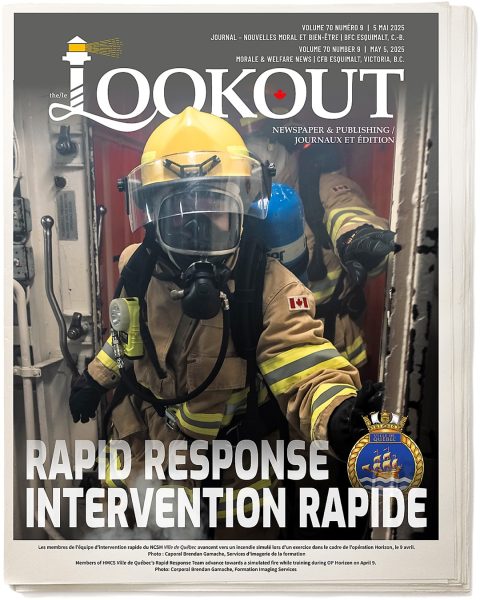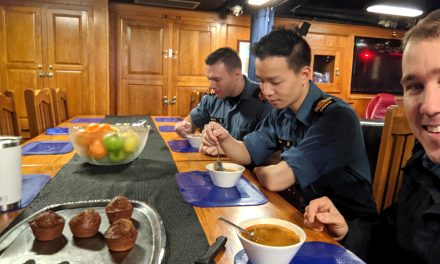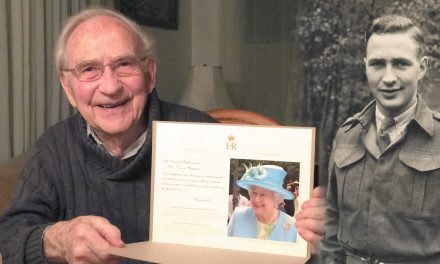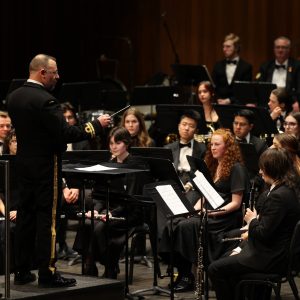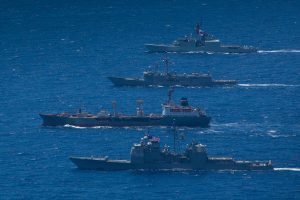
Ships participating in RIMPAC, Rim of the Pacific Exercise, sail in formation in the waters around the Hawaiian Islands.
After months of preparation and weeks of training, 25,000 personnel from 22 nations breathed a collective sigh of relief as the Rim of the Pacific Exercise (RIMPAC) 2012 came to an end.
Conducted in operating areas on and around the Hawaiian Islands and in the Southern California exercise areas, the world’s largest maritime exercise officially ended Aug. 3. The exercise included more than 1,400 Canadian Navy, Army and Air Force personnel.
“I am truly pleased with what we have achieved as part of this exercise,” said Rear Admiral Ron Lloyd, the Deputy Combined Task Force Commander and the senior Canadian participating in the exercise. “The challenging scenarios allowed Canadians and our Pacific Rim partners to develop the skills we will need to work successfully with each other, wherever we may be called upon to deploy.”
Royal Canadian Navy participation in the exercise included Her Majesty’s Canadian Ships Algonquin, Ottawa, Brandon, Saskatoon, Victoria and Yellowknife, as well as two teams from the Fleet Diving Unit stationed in Victoria, B.C.
The Royal Canadian Air Force provided four CF-140 Aurora Long Range Patrol Aircraft from 14 Wing Greenwood, N.S., and 19 Wing Comox, B.C.; seven CF-188 Hornet fighter jets from 3 Wing Bagotville, Que., with augmentation from 4 Wing Cold Lake, A.B.; and two CH-124 Sea King detachments assigned to Algonquin and Ottawa.
The Canadian Army provided more than 122 members from the 2nd Battalion of Princess Patricia’s Canadian Light Infantry (PPCLI) including augmentation from 1 PPCLI, 3 PPCLI, 1 Combat Engineer Regiment and 1 Field Ambulance. Finally, more than 100 members of the Canadian Forces occupied a variety of staff and leadership positions within the exercise.
“A significant highlight was HMCS Victoria’s Mk 48 torpedo shoot,” said Rear-Admiral Peter Ellis, Commander of the Pacific Fleet and the Amphibious Assault Task Force Commander for the exercise. “As an exercise participant, submariner, and Commander of Canadian Fleet Pacific, I was truly proud of the crew’s efforts and of those who have supported her here and back home.”
Other naval highlights included Ottawa and Algonquin training as part of the multinational task group attached to defend USS Nimitz for the exercise. For them, RIMPAC 2012 provided an opportunity to train the sailors of tomorrow. The experience gained and lessons learned during RIMPAC will serve to better prepare the RCN for future exercises and operations. Off the coast of San Diego, HMC Ships Brandon, Saskatoon and Yellowknife as well as a team from the Fleet Diving Unit Pacific conducted more than three weeks of mine warfare training with U.S. and Australian counterparts, achieving a high level of proficiency and individual training.
The Canadian Forces’ participation in the exercise harks back to 1971, when the exercise brought together ships from Australia, U.S. and Canada. Since then, the biennial exercise has grown into a truly multinational event, joining air, land, marine and maritime elements from around the world.
For the first time in RIMPAC history, component commander positions were held by non-U.S. participants. Canada filled the position of Combined Forces Air Component Commander with Brig. Gen. Michael Hood, a Royal Canadian Air Force officer currently employed as the Deputy Director General of International Security Policy at National Defence Headquarters.
“Working in a coalition setting has its challenges” Brig. Gen. Hood said. “Even native English speakers can sometime interpret the same word differently. The fact that more than 200 aircraft were able to operate safely throughout the exercise is a testament to the 18 months of planning and the professionalism of air personnel from every country who participated in the exercise.”
From the Royal Canadian Air Forces perspective, the exercise provided many opportunities to meet national requirements. The maritime patrol and reconnaissance aircraft community had the opportunity to test the Block III variant of the aircraft while working closely alongside their Australian, Japanese, New Zealand, Korean, and U.S. counterparts. Algonquin’s air detachment had a landmark day when its Sea King helicopter dropped five exercise torpedoes in one morning during an anti-submarine warfare training and research event. The seven-strong F-18 detachment practiced close air support and defensive counter air and strike missions and had the unique opportunity to support a Combat Search and Rescue scenarios for a ‘downed’ pilot. Finally, the air refuelers delivered 1,460,000 lbs. of fuel to U.S. EA-6B Prowlers and variants of the F-18 Hornet, including Royal Canadian Air Force F-188s and F-18E Super Hornets. 435 Squadron, with one CC-130 refueler, delivered 620,000 lbs. of fuel while 437 Squadron, with one CC 150 (T) delivered 840,000 lbs. of fuel.
For the Canadian Army, the exercise provided opportunities to conduct interoperability training with coalition partners, to hone their warfighting skills at the section, platoon and company level, and conduct validation and continuation training in non-combatant evacuation, assisting Canadian civilians who need to be removed from areas of conflict.
“RIMPAC was an outstanding training venue to conduct challenging training, where our tactics, techniques and procedures could be rehearsed and validated in a coalition environment,” said Maj. Stephen Davies, Alpha Company Commander, 2 PPCLI. “There are tremendous training facilities in Hawaii and we capitalized on the time we had here to train. I couldn’t be more pleased with the level of competence, professionalism and adaptability of my soldiers on the international stage,” said Major Davies.
The exercise followed a tiered training schedule that allowed participants to follow a crawl, walk, and run pace. The first three weeks were dedicated to honing individual and unit level skills, followed by a week of force integration training. This phase, which brought together more than 25,000 personnel into one combined force, focused on command and control procedures allowing the various units to adjust to the new construct. The final phase pitted the newly trained combined force against a fictitious foe in an elaborately-developed scenario designed to challenge the entire force.
RIMPAC 2012 included forces from Australia, Canada, Chile, Colombia, France, India, Indonesia, Japan, Malaysia, Mexico, the Netherlands, New Zealand, Norway, Peru, Philippines, the Republic of Korea, Russia, Singapore, Thailand, Tonga, the United Kingdom and the United States.
LCdr Nathalie Garcia, Navy PAO
